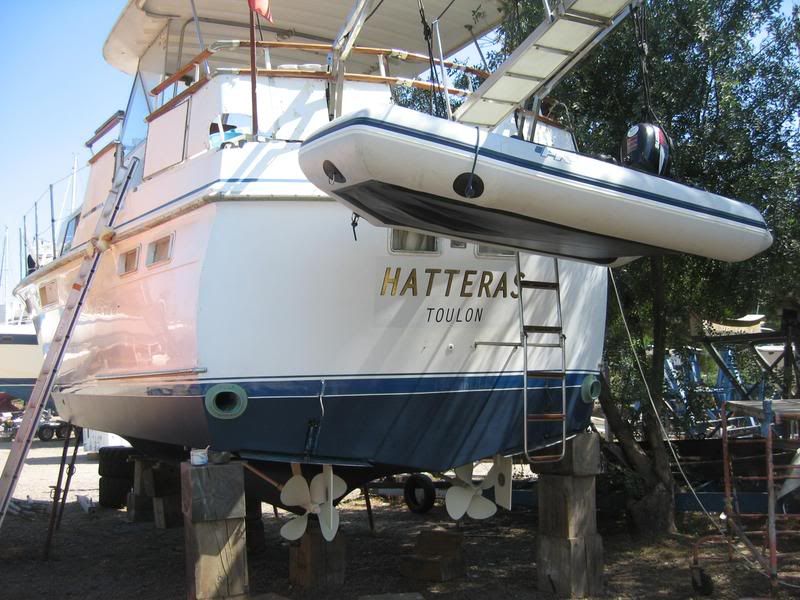richardoren
Well-known member
- Joined
- Mar 15, 2006
- Messages
- 303
- Status
- OWNER - I own a Hatteras Yacht
- Hatteras Model
- 38' DOUBLE CABIN (1967 - 1971)
Trying to dilute the grizzly repairs with hopeful improvements, I located a tender hoist which mounts to a swim platform at the transom. It would be great but I first have to make sure that an after market fiberglass swim platform could withstand the weight of the dinghy. The hoist accepts up to 650 lbs, and it would be holding that weight during rough seagoing. Here's a picture of it in operation:
http://www.davitsystem.com/hydraulic_demo.htm
Thanks for letting me know if you think this would work at the back of a Hatt with only a couple of portholes in the stern. I would need to find a way of making a sturdy support under the front edge of the platform, using the access under the two lower drawers of the aft master stateroom. It would be great not having to disassemble more than that, especially not removing the fuel tanks under the aft cabin twin bunks.
All suggestions appreciated, as well as leads to a sturdy used swim platform.
Rich
http://www.davitsystem.com/hydraulic_demo.htm
Thanks for letting me know if you think this would work at the back of a Hatt with only a couple of portholes in the stern. I would need to find a way of making a sturdy support under the front edge of the platform, using the access under the two lower drawers of the aft master stateroom. It would be great not having to disassemble more than that, especially not removing the fuel tanks under the aft cabin twin bunks.
All suggestions appreciated, as well as leads to a sturdy used swim platform.
Rich




